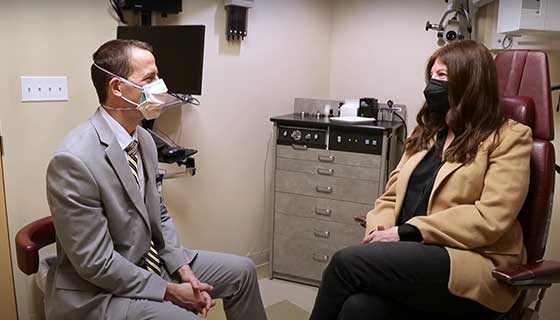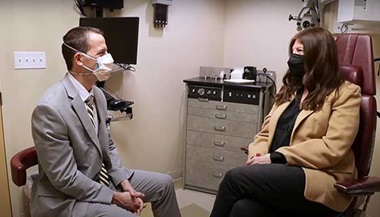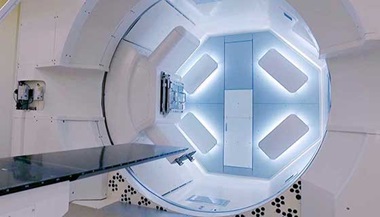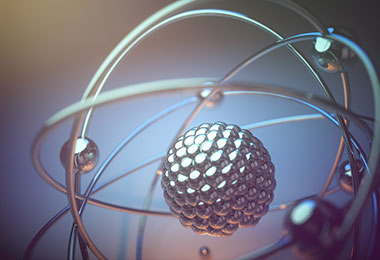Proton Therapy for Treating Childhood Cancer
Reviewed By:
The outlook for children with cancer grows more promising every day. According to the American Cancer Society, about 80% of kids with cancer are surviving at least five years past their diagnoses. A type of radiation treatment called proton therapy is increasing that positive trend.
Like other forms of radiation, proton therapy uses a beam of high energy directed at a tumor to kill its cells. But proton therapy offers some unique benefits.
Why Proton Therapy is Advantageous for Children
“In certain pediatric patients, proton therapy can dramatically reduce the risk of late complications from radiation,” notes Matthew Ladra, M.D.,M.P.H., director of pediatric radiation oncology at the Johns Hopkins Kimmel Cancer Center at Sibley Memorial Hospital.
Leaving more of the body untouched by radiation is especially important when treating cancer in children, whose bodies are still growing. Although radiation is an extremely effective tool to kill cancer cells, too much can harm healthy tissue and increase the risk of new cancer.
The high precision of proton therapy protects more healthy tissue than regular, x-ray-based radiation methods. Proton therapy can be used for children of all ages, but the benefit is greatest for very young children and infants.
Minimizing the ‘Exit Dose’
Regular radiation treatment uses a beam of energy that can pass through the human body. When directed at a tumor, the beam goes through the tumor and some of that radiation travels out the other side. That extra radiation, called the “exit dose,” can affect healthy tissue as it leaves the tumor.
Proton therapy, in contrast, can be adjusted to stop at the edge of the tumor, with very little exit dose.
Pediatric Proton Therapy at Sibley Memorial Hospital
Dr. Matt Ladra explains how the proton therapy center opening in the fall of 2019 at Sibley Memorial Hospital will uniquely benefit pediatric patients.
Reducing Excessive Radiation
Proton therapy is most useful when a tumor is in or near a sensitive area of the body. Brain tumors are an example.
“If a child has a tumor located on one side of the brain, protons can effectively eliminate any radiation from traveling to the other side of the brain,” Ladra explains. “Excess radiation to developing brains has a chance of causing difficulty with learning and memory later in life, so anything that gets rid of the ‘spillover’ dose is great for our kids.
“Spinal tumors just behind the heart, tumors next to the eye or tumors in the muscles next to reproductive organs are all situations where proton therapy shines and can reduce the chance of having any negative impact on those organs.”
Reducing the Risk of Future Cancers
“One serious side effect of cancer treatments like chemotherapy and radiation is the risk of developing a treatment-related cancer later on in life,” Ladra says. “This risk is very small, but because children are more sensitive to radiation effects and have a much longer life expectancy, everything doctors can do to minimize that risk benefits our pediatric patients in the long run.
“With radiation therapy, only the areas of the body that are touched by the radiation are at risk for a future cancer. Since proton therapy decreases the amount of healthy tissues touched by radiation, there is likely a reduced risk of future cancers in pediatric patients. Early studies in adults show the risk of developing a radiation-related cancer can be cut in half with the use of proton therapy.”
Proton Therapy at Johns Hopkins
- Precise, personalized care delivered by leading experts.
- Ability to target hard-to-reach tumors.
- Care offered in Washingon, D.C.
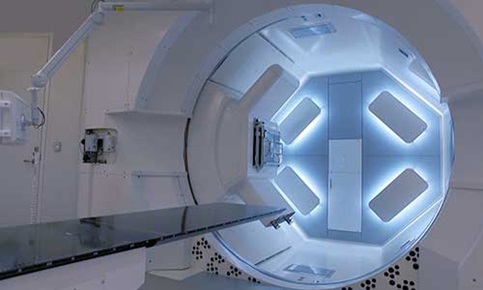
Pediatric Cancers That Can Be Treated with Proton Therapy
- Brain tumors (glioma, medulloblastoma, ependymoma, germ cell tumor and many others)
- Cancers of the head and neck (nasopharyngeal and parotid gland tumors, and others)
- Sarcomas (Ewing sarcoma, rhabdomyosarcoma, osteosarcoma and others)
- Neuroblastoma
- Cancers affecting the eye (retinoblastoma and others)
- Spinal cord tumors
Be sure to discuss all treatment options with your doctor.



